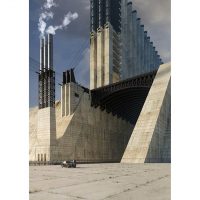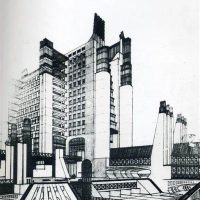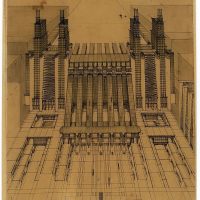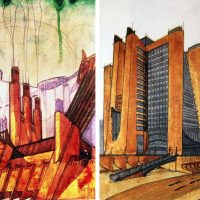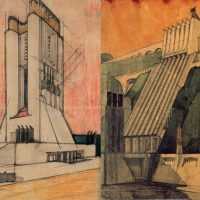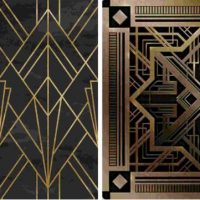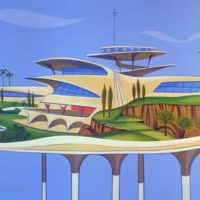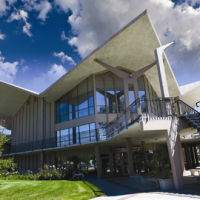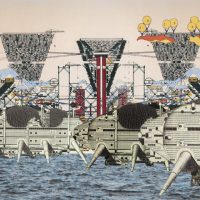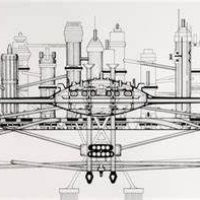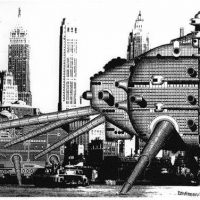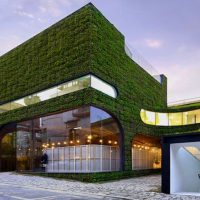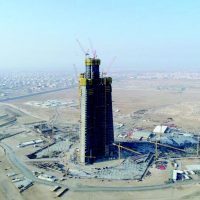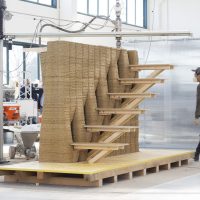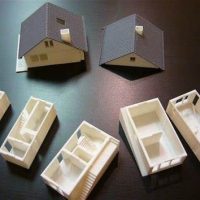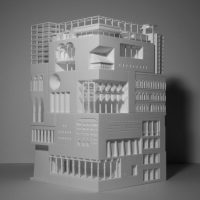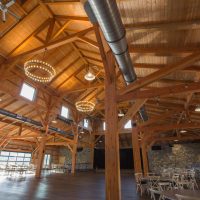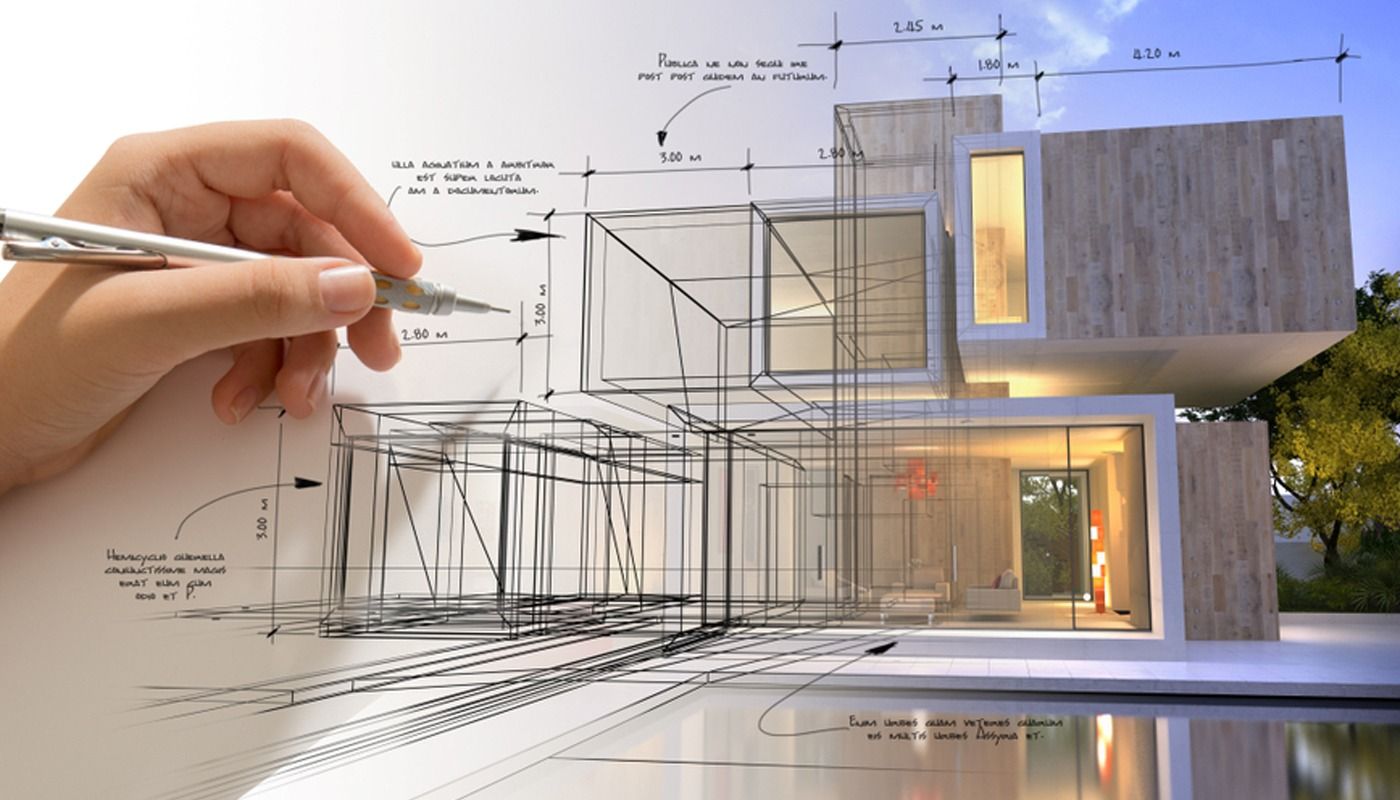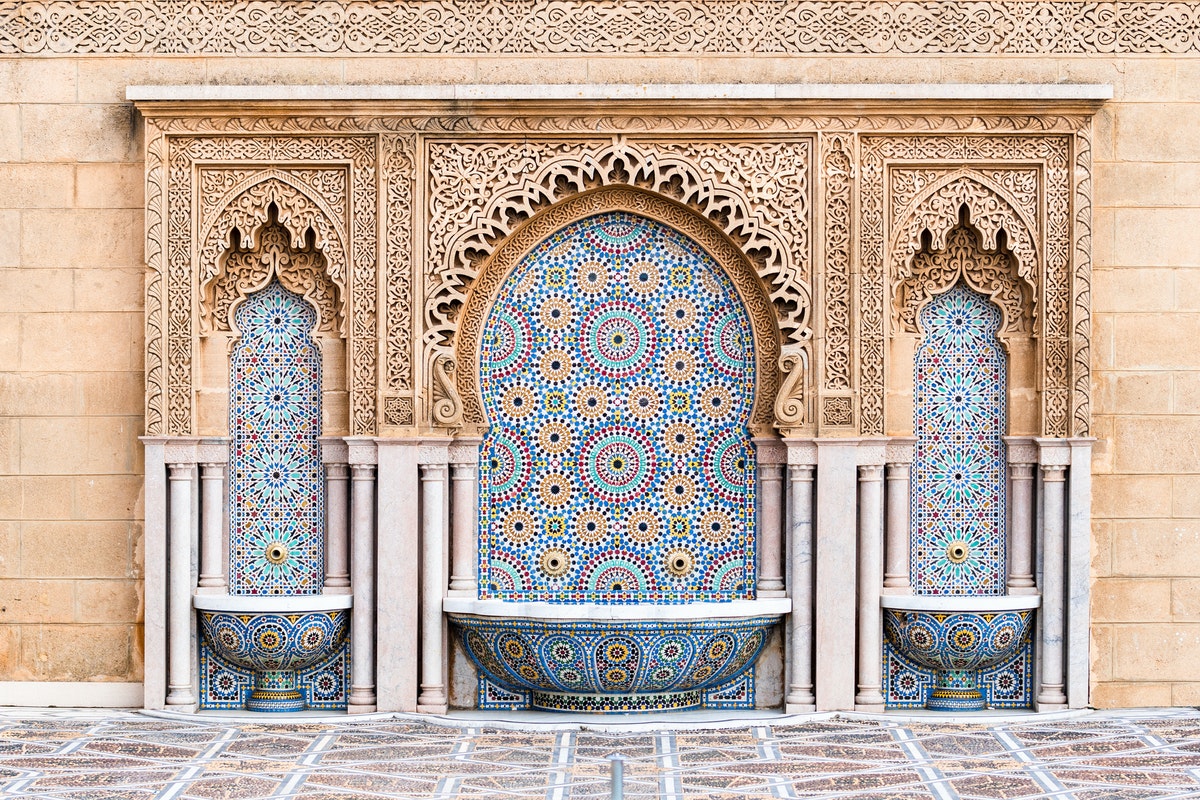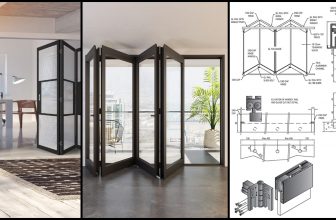Humanity continuously hopes for a better tomorrow. We may not be able to change the past, but we can do our best to create a better future, for the present is the key to a wonderful tomorrow. Our current thoughts and actions are what shape our future and no one is better at ‘shaping’ than architects. They simply live for it! A building designed by an architect today may live for 100 years beyond to tell the tales of the past and shape the future. Architects do not restrict their imagination to what is possible right now but rather to what could be and what they wish for. They draw futuristic architecture in their minds and leave evidence of their fantasies on paper to inspire generations yet to come – architects’ Visions of Future Cities are what we are living now and what the next generations will live.
Throughout the past century, the image of futuristic architecture has transformed three times. These transformations were influenced by revolutionary inventions and technological developments which had changed the way people perceived the future. So, let’s see how futuristic architecture visions have changed in 100 years!
Futuristic Architecture in 100 Years:
1. Early 20th Century: Rise of Futurism
Etienne-Louis Boullée’s Cenotaph for Newton may have been an early proof that architects have always dreamed big. However, one most remarkable effort to create a vision of futuristic architecture was that by the young Italian architect Antonio Sant’Elia, co-creator of the “Manifesto of Futurist Architecture.”
Sant’Elia and fellow Italian architect Mario Chiattone presented a group of sketches under the title “La Città Nuova” or the New City, during the events of the Nuove Tendenze Exhibition in Milano in 1914. These sketches depicted the futurist architects’ vision of futuristic architecture.
Sant’Elia’s sketches reveal megastructures, industrial architecture, and extensive use of steel. They reflect the spirit of the machine age and pre-war times. Also, it is worth noting that the Futurist movement, which originated in Italy, was pro-fascism, and Sant’Elia himself volunteered in World War I in which he got killed at age 28.
In the meanwhile, the style Arts Décoratifs, publicly known as Art Deco, rose in France and spread all over the world. It was inspired by the same technological developments that lead to Italian Futurism, but the results were a bit different.
Art Deco, which was regarded as a futuristic style back at the time, combined geometric shapes with bright colors as well as a twist on decorative details from ancient civilizations.
2. Post World War II: Welcome to Space Age!
After world war II, humanity was in doubt, hopeful but not so sure about it. Yet, new discoveries and inventions gave people hope that a better future could be waiting for them. One of the achievements that illuminated that hope was space exploration.
Did you watch the Jetsons as a child? Well, there you are. The Jetsons was running in the early 1960s, following the Googie architecture style’s rise to popularity in the 1950s. The style featured curving and round forms, inspired by flying saucers and atomic diagrams.
Automobiles also gained popularity and came to be mainstream around the same time. The construction of highways in the 1950s greatly contributed to reforming the urban image of the city by making cars the most convenient mean of transportation.
-
Archigram
After World War II, Futuristic architecture became Neo-Futuristic Architecture, which includes numerous works by renowned modernist and contemporary architects. Eero Saarinen, Oscar Niemeyer, Zaha Hadid, Santiago Calatrava, and Cesar Pelli are only a selection of architects with notable neo-futuristic works. However, one group that took futuristic architecture to the next level is none other than the London-based Archigram.
The Avant-Garde group, founded by Peter Cook, was highly active in the 60s and early 70s. During that time, they released hundreds of conceptual illustrations and drawings of futuristic cities, which mostly featured megastructures, dynamic architecture, and total mechanization.
3. The New Millenium: Digital Revolution
In the years that followed World War II, mechanization started bit by bit to turn into digitization. Only later in the 1980s, architecture started to reap the fruits of the digital age. Computer modeling and simulations became an essential part of the design process.
Also, read:
8 Architectural Design Software That Every Architect Should Learn
The parametric design may have been there since earlier times. It is believed that Gaudi’s work holds early evidence of employing nature-inspired algorithms. However, this design mechanism has significantly experienced a leap in the 80s, thanks to the developments in the field of computer design software. Frank Gehry‘s iconic Walt Disney Concert Hall, built between 1999 and 2003, showcases the use of CATIA software as a means for parametric design.
Parametric design software applications are still undergoing developments, by programmers and architects alike, to facilitate and customize the design process.
-
Eco-Friendly and Sustainable Design
In the second half of the 20th century, scientists and researchers started noticing the negative influence of all the technological developments and human activities in the past couple of centuries on the environment. However, only in the 21st century, the awareness translated into actions, and the term sustainability has become in vogue.
Sustainable architecture and design have become a necessity rather than an option. Consequently, evaluation systems have been developed to grade buildings based on their energy performance and their environmental impact. Also, concepts—like vertical forests, green roofs, roof gardens, and green walls, which incorporate greenery into the built environment have become quite trendy.
Also, read:
10 Most Sustainable Office Buildings Worldwide
10 Sustainable Houses You Would Love to Live in
Ever since the construction of the world’s first skyscraper in the late 19th century in Chicago, with a height of 55 meters—10 floors, a lot has changed. And here we are, anticipating the completion of the construction of a 1-kilometer tower in Jeddah, Saudia Arabia.
New technologies in the field of construction, ranging from structural systems to building materials, have made it easier and easier to defy gravity. Also, scientists and engineers have gone far with seismic and aerodynamics research in order to guarantee the stability of high-rises under various circumstances.
Also, read:
Piercing the Sky – What is the Tallest Building in the World?
-
3D-Printed Architecture
In 1981, the first 3D printer was invented, and since then, 3D printing has been developing at a competent pace. It has proved handy in various industries, and in combination with computer modeling software, it has revolutionized the world of design.
3D printed jewelry and furniture are no longer a cause of wonder. Also, in a recent couple of years, we have heard of a 3D-printed bridge and a 3D-printed prefab house which shows promise for the architecture industry.
Also, read
Why 3D Printing Is All the Talk Now in Architecture?
3D Printed House by Apis Cor Entirely Created in One Day
-
Timber Construction
Timber and timber structures may have been there since ever, but what is actually new is manufactured timber. Wood is one of those materials which has undergone a lot of experimenting to be incorporated in buildings as a structural or finishing material. HDF, MDF, veneer, and plywood are examples of engineered wooden materials used for finishing.
However, what we may regard as a truly revolutionary twist on wood is cross-laminated timber (CLT). The commendable properties and strength of CLT have gotten architects interested in building wooden skyscrapers. So, the dream of a totally sustainable skyscraper may not be too far from reach.
Also, read All You Need to Know About Cross Laminated Timber CLT
All of these trends, still under development, maybe the ones to shape our future. In addition, there are multiple innovations that may have no architectural applications at the present but are expected to revolutionize the industry, maybe sooner than we think. What else could shape future architecture and the world we live in? Tell us what you think!



